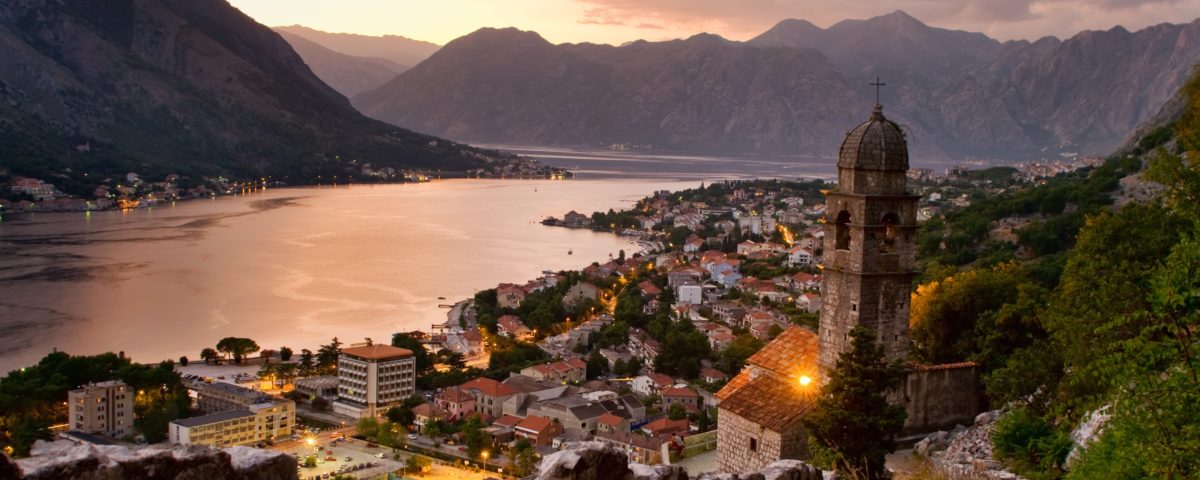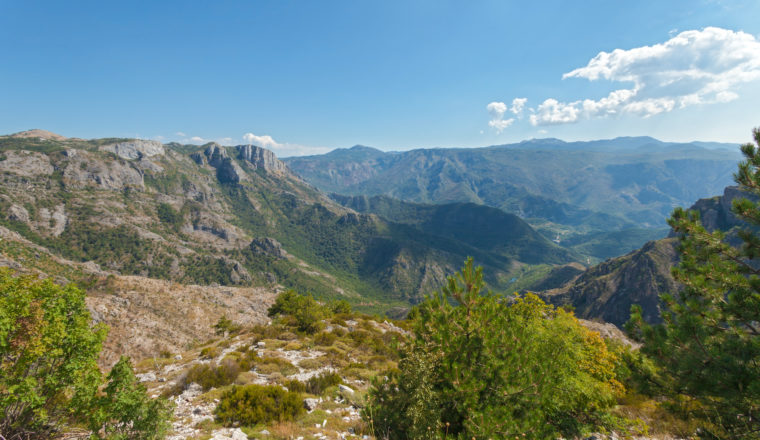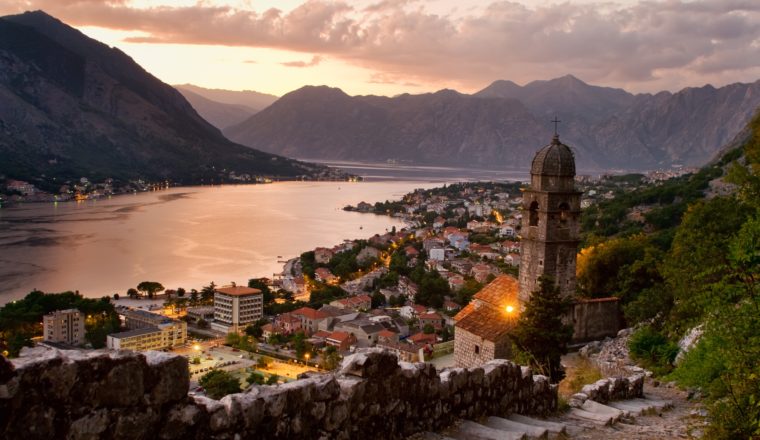
Montenegro is a country in Southeast Europe on the Adriatic Sea. It has an area of only 13,812 square km, but every corner of Montenegro is primed for exploration. Celebrated for its stunning beaches (117 of them along 293 kilometres of coastline), and vast mountain ranges, Montenegro has it all. Here we outline the best walks and hikes offered up by this Balkan gem.
Durmitor National Park

Durmitor National Park, Montenegro.
Montenegro is full of Instagram-worthy spots, but the views in Durmitor National Park really are something. Located in the North of the country, Durmitor has been a UNESCO World Heritage site since 1980. Formed during the Ice Age, you can still explore the remnants of the creation process; stunning glacial lakes, canyons and caves take your breath away. The park encompasses the Durmitor mountain range, which is part of the Dinaric Alps. The highest peak in the park is Bobotov Kuk (2,523 metres above sea level), which can easily be ascended by intermediate hikers. For amateur hikers, Crvena Greda (2,164 metres) is a more suitable trail.
Durmitor is home to 163 bird species, 50 types of mammals and the greatest variety of butterflies in Europe. July, August, and September are the best months for hiking in Durmitor, as you’ll experience the perfect weather.
Mrtvica Canyon
If you want to get off the beaten track, Mrtvica Canyon is the perfect place to explore. The canyon itself is 8 kilometres long and its trekking route consists of a 7.5 kilometre (6 hour) hike. It’s definitely a hidden gem, so you can expect solitude and a peaceful hike, with few tourists. The hike is located 40 kilometers north of Podgorica, Montenegro. A stunning canyon, you will enjoy traversing bridges, seeing trout swim in clear waters, and walking past rushing waterfalls. About 5 kilometres into the hike you’ll reach a passage called the Mrtvičke Grede or the Mrtvica Beams. These “beams” look like horizontal ribbons in the rockface, and really are a sight to behold.
Bjelasica
Another great hiking destination in Montenegro is Mount Bjelasica. Quiet and unspoilt, just like the Mrtvica Canyon, it is a haven for hikers who love nature and peaceful exploration. There are 17 peaks to hike here, with Crna Glava, Zekova Glava and Troglava being the most popular. Bjelasica offers some breathtaking views, which are peppered with quaint shepherd huts and the odd patch of snow, even in glorious summer months.

The old Mediterranean port of Kotor, surrounded by an impressive city wall built by Republic of Venice.
Sveti Andrija Fortress in The Bay of Kotor
No trip to Montenegro is complete without hiking around The Bay of Kotor. And its most beautiful hike is inarguably the trail to Sveti Andrija Fortress. The fortress is an Austro-Hungarian building erected in the 19th century, with an elevation of 743 metres above the sea level. The hike starts from the village of Orahovac with a gentle climb, weaving through small forests, past 19th century military posts and around the remains of former villages. He hike takes around 6 hours to complete, but is not particularly challenging, so is suitable for families. When you reach the summit, the fortress (Sveti Andrija) is an extensive and impressive sight to explore, and well worth the hike.
Via Dinarica
The Via Dinarica is one of the best hiking routes in the whole of Europe, and arguably Montenegro’s greatest gem. In fact it was named Outside magazine’s Best New Trail in 2014. The Via Dinarica trail is vast, stretching across more than 120 stages through Slovenia, Croatia, Bosnia and Herzegovina, Montenegro, Kosovo, Serbia, Albania, and Macedonia. One of Via Dinarica’s most popular spots is located in Montenegro’s north. The trail passes through Prokletije, Biogradska Gora and Durmitor national parks. Those who hike this celebrated trail will experience its challenging peaks, rolling hills, lakes, stunning alpine pastures and glacier lakes.
Today Montenegro is home to some of the best walking routes in Europe. The variety of landscapes, wildlife, and quiet and unspoiled trails make it a true hiker’s paradise.
Sign up to receive the latest information on World Walks